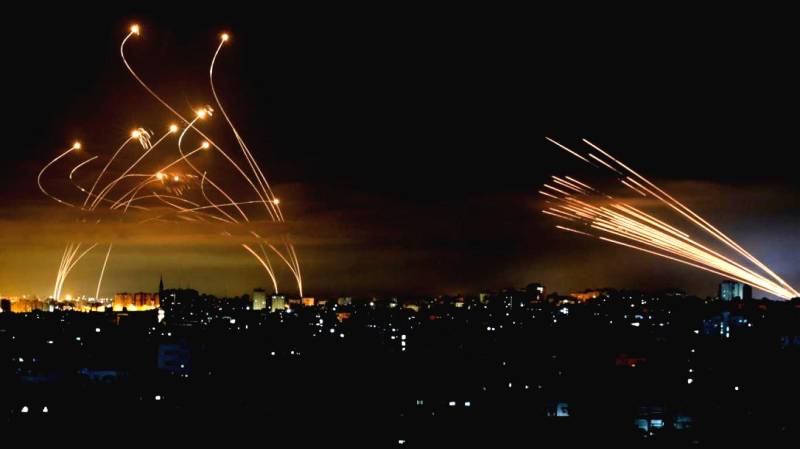
What is the Impact of Hybrid War on the Philosophy of Insurgencies?
For hundreds of years, states have been defined as either successes or failures. The debt to sustain prosperity and maintain security has always been among the key focuses of leading as well as emerging powers. However, the deliberate manufacture of rising and subsiding threats to the government terrorizes a state’s very foundations. A nation’s failure or success is demarcated by its economic growth, development, political thought, and more importantly by those psychosocial aspects which might lead to internal conflict, violence and uncertainty within the state itself. Successful nation-states prepare long-term policies and execute actions that advocate the well-being of their citizens, prioritizing them without compromising state security.
The emergence of unpredictable variables of war and new forms of belligerence such as ‘gray zone’ tactics have become significant issues for the world, especially in the military and strategic political dimensions. Transition amid wars was based on the distinction between inter-state military hostilities and armed conflict within intra-state modules. In terms of ‘old’ conventional wars, the era of globalization – since the late 1990s and early 21st century – has created a substantial dichotomy which is prompting new characteristics of belligerence. This ferocious kind of war has been heavily utilizing unconventional methodologies such as guerilla insurgencies, hybrid wars, transnational terrorism and wars over drugs: with conflicts raging for decades.
Classically, hybrid wars encompass weak or failed states that are subjugated by fraudulent officials and/or confronted by violent insurgents. The two sides are correspondingly assisted by foreign factions, and are driven by elements of religious or radical ideology. The insurgent’s hybrid tactics – in both the conventional domain and information operations domain – are designed to protract their war against the government while inflicting maximum damage on the state.
Hybrid warfare conflicts erupted during the course of the first decade of 21st century, in reference to non-state actors endeavoring to wage war against militarily superior state opponents. Hybrid war is interwoven with transnational aspects: both insurgents and the government use strategies centered upon transnational crime networks, transnational diaspora links, legitimate international trade, and the intervention of a range of foreign states as well as global non-state actors. Hybrid war is a form of warfare that can be prosecuted by the state as well as non-state actors; it incorporates an all-inclusive-spectrum approach of warfare that utilizes conventional military capabilities, strategic maneuvers, unconventional terrorist attacks, political chaos, social violence, cyber war, etc. Asymmetric conflicts take the form of a widespread rebellious movement which involves guerilla tactics and sub-conventional operations conducted by insurgents in primarily rural – and later the urban – areas of the state.
Conventional military operations, guerrilla warfare and terrorism are the few strategies of ‘old’ wars which hybrid wars incorporate. In order to overcome conventional disadvantages, insurgents display rapid evolution of tactics employed as well as innovation in the array of armaments used. Cyberspace is another postmodern refuge where extremists and jihadists generate propaganda, recruit operatives, attract sympathizers and carry out communications while adversarial government agencies attempt to trace and neutralize them. As two or more sides engage each other in these assorted domains, there is a growing risk that weapons of mass destruction can be deployed, as happened in Ghouta, Syria, on 21 August 2013.
Hybrid war is conducted in alliance with non-state actors who employ both regular and irregular tactics to launch armed campaigns against states and governments. The war Israel fought against Hezbollah in 2006 was the stereotypical case of hybrid warfare. Hezbollah was a non-state actor fully sponsored and backed by Iran; however, it had its own agenda and policies due to which it abducted Israeli troops, and that served as the stimulating factor for pulling Israel into a war. Hezbollah posed a serious threat to conventional Israeli Defense Forces not only because it deployed irregular strategies against them, but also because it employed conventional force with political, social and diplomatic components which provided the concrete backup for the revolt. After the conflict with Israel subsided, Hezbollah not only built up its military capabilities, but began running a parallel government that provided health, education, and essential services to the people in areas under its control. Due to its effectiveness relative to a corrupt state apparatus, Hezbollah began receiving significant political support that enabled its emergence as a powerful voice in the Lebanese parliament. The inability of Lebanon to rein in Hezbollah or reinforce its writ on its southern territories has only facilitated Hezbollah’s rise into a prominent non-state actor in the region. This has obviously happened at the expense of Lebanon, now on the brink of becoming a failed state.
This same methodology has been employed – with modifications – by Hamas and Palestinian Islamic Jihad (PIJ) in the recently concluded Gaza war. While Israeli occupation of Palestinian territories theoretically converts all Palestinian opposition into non-state actors, Hamas also exploited the political, security and democratic vacuum created by Mahmoud Abbas, president of the Palestinian National Authority since 2005. Xenophobic dispossessions at Sheikh Jarrah and violent attacks on Masjid al-Aqsa during the month of Ramadan served as catalytic justifications for Hamas to respond with force. While Palestinians suffered twenty times as many casualties as Israelis, social media globalized the information operations domain and rendered stinging embarrassments to Israel, forcing it to cease fire.
As hybrid warfare domains and ‘gray zone’ operations continue to evolve, states can only survive if they give precedence to public welfare and the interests of their citizen; redefining core security objectives must no longer be construed as compromising on state security.
